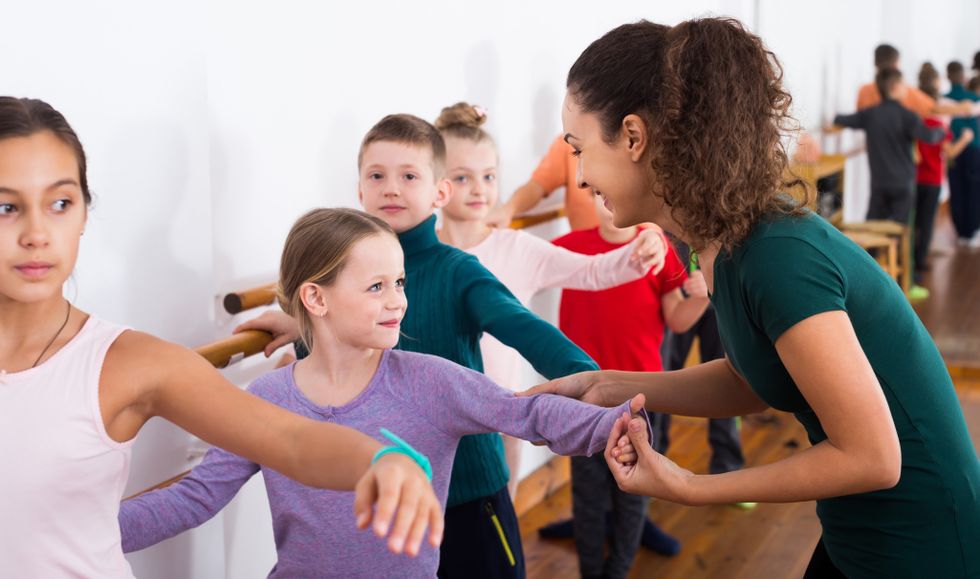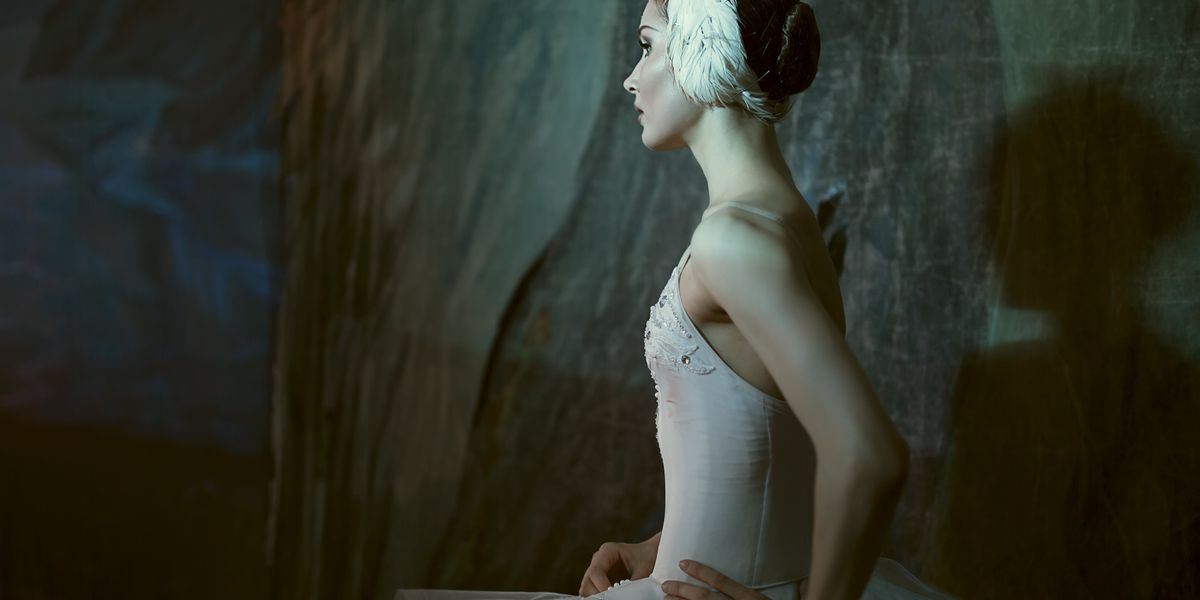Why Do Some of the Most Talented Dancers Never "Make It"?
Since its founding in 1999, more than 80,000 ballet dancers have participated in Youth America Grand Prix events. While more than 450 alumni are currently dancing in companies across the world, the vast majority—tens of thousands—never turn that professional corner. And these are just the statistics from one competition.
“You may have the best teacher in the world and the best work ethic and be so committed, and still not make it,” says YAGP founder Larissa Saveliev. “I have seen so many extremely talented dancers end up not having enough motivation and mental strength, not having the right body type, not getting into the right company at the right time or getting injured at the wrong moment. You need so many factors, and some of these are out of your hands.”
While we most often talk about the few dancers who make it in a big way, there is a lot to be learned from the much larger group who don’t get there. Why do some seriously talented dancers never end up fulfilling their potential?
“It is not about talent—it’s about personality and perseverance,” says Ray Leeper, director of NUVO Dance Convention. “The process of becoming a professional is different than being a professional.”
The Problem: Being Unprepared
 A mentor will help you understand what it takes to make the transition from student to professional. Photo by Unsplash
A mentor will help you understand what it takes to make the transition from student to professional. Photo by Unsplash
After graduation, most young dancers spend a year or two auditioning or doing second company work. This limbo can be confusing to navigate and many young dancers—and their parents—do not have a realistic idea of what to expect. For instance, what should your schedule and priorities look like when you are auditioning or in between jobs? What will a transition year or two really cost?
The Solution: Get a Mentor
Seek out a trusted professional or former professional who can answer your questions and act as a guidance counselor when you are thrown off course. Someone who can help you understand what your days will actually look like and assess whether or not this career is for you. Of course, it would be great to have a mentor with professional connections to help you network, but the important part is finding someone who wants to help, who has the information and experience, and who can give you much-needed moral support. If you don’t have teachers or connections you feel you can turn to, check out online resources like mentorly.co and balletmentor.com. “The first year is the hardest,” says Saveliev. “And it is even harder to do it by yourself.”
The Problem: Financial Stress
 Getting a side job in the industry will likely give you more flexibility to fit in auditions and rehearsals. Photo by Thinkstock.
Getting a side job in the industry will likely give you more flexibility to fit in auditions and rehearsals. Photo by Thinkstock.
Not everyone has parents who support them during this transition. Some dancers also have college loans that need repaying. It can be anxiety-inducing to live in a state of constant financial uncertainty, not knowing whether or when you will land a new gig or a contract.
The Solution: Find a Day Job in the Industry
Make a plan for how you are going to manage your bills during a year when you may not make much money. If you have to get a side job to make ends meet, Leeper recommends keeping it inside the industry if you can. Working as a teacher or administrator will probably give you more flexibility to continue to take class, stay in shape, rehearse and go to auditions.
The Problem: Growing Disillusioned
 Getting cut is a normal part of the process. Don’t let it diminish your drive. Photo by Matthew Murphy for Pointe.
Getting cut is a normal part of the process. Don’t let it diminish your drive. Photo by Matthew Murphy for Pointe.
For prodigies who are used to constant praise, the biggest shock can be that the professional world is full of rejection, says Leeper. “Many dancers fall off when no one is telling them they are wonderful anymore.” It can be deflating to be cut from audition after audition, or not get any feedback in company class.
The Solution: Stay Open and Say Yes
The truth is, dancers who already think they’re amazing are unlikely to improve. “You have to be open to correction, be open to not knowing,” advises Susan Jaffe, dean of the School of Dance at the University of North Carolina School of the Arts, who likens the experience to being an explorer. “You have to channel the desire to expand yourself in order to make it, and then again even when you are professional, in order to be an artist.”
If you have the financial flexibility to donate your time to choreographers in your community, it will help you to keep honing your craft and remind you of what you’re struggling for, suggests Leeper. Plus, you never know when that person will get their next big job and bring you along. “Many choreographers want to use people they know and have used before,” says Leeper.
The Problem: Getting Distracted
 Don’t waste your time comparing yourself to Insta stars. Photo by Thinkstock
Don’t waste your time comparing yourself to Insta stars. Photo by Thinkstock
Following all of the latest contortionists on Instagram can draw your focus away from the daily rigors and restorative downtime that dance requires. “People are so distracted by information, checking their phones constantly. There seems to be very little time now in life for rest, reflection, for the imagination,” says Jaffe. Wasting time comparing yourself to Insta stars will only make you feel inadequate for not being able to développé on a BOSU ball or not going on tour with Beyoncé yet. “Everything seems like it has to happen so quickly when you are measuring yourself up against someone else’s success on social media,” says Leeper.
The Solution: Ground Yourself
Face-to-face, human connections will help you stay grounded and focused on your goal. “Disconnect from the background noise, surround yourself with people who are healthy and productive, and find your place in the community,” says Leeper. Go to performances, talk to other dancers after class, and make it a point to meet one new person at every event or class you attend.
The Problem: Apathy
 Writing down a training plan to keep yourself accountable. Photo by Unsplash
Writing down a training plan to keep yourself accountable. Photo by Unsplash
To be successful, you can’t rest on your laurels. “No matter how beautiful the execution of a step, that’s not all there is,” says Jaffe. “Being a professional means going so much deeper and becoming so much more dimensional, developing your emotional connection, coordination, musicality, intentionality and creativity.” Yet when you’re not in a structured training program or company, it can be tempting to try to get away with the bare minimum.
The Solution: Make a Schedule
Stay disciplined by keeping yourself accountable. “Plan. Write it down. Make yourself a real schedule,” advises Leeper. “You have to be in class constantly when you are in between gigs or looking for work—ballet classes, too.” But don’t just go through the motions. Apply everyone’s corrections, stay present and curious. And don’t forget to pencil in cross-training, too.
The Problem: A Major Injury
 Use time away from the studio to explore the world outside of dance. Photo by Thinkstock
Use time away from the studio to explore the world outside of dance. Photo by Thinkstock
A serious injury at the wrong time can throw unprepared dancers off track, says Saveliev. It can force you out of your schedule, which can be depressing. Without a long-term vision to get back and a plan for how to use all of your newfound time, it can be tempting to give up.
The Solution: Focus on Artistry
Think of ways you can develop the mental and emotional strength that recovering from an injury requires. “Nourish yourself with music, museums, painters, the world,” says Jaffe. “When you have many interests and the deep education of being a human, you will be able to impart that to audiences.” Nothing has to be lost, not even weeks or months spent recovering, if you use your time well and come back stronger.
And if you still don’t make it?
“It’s never failure. There are just different paths,” muses Saveliev. “We don’t all have to climb the same mountain.” Life as a professional dancer is ultimately not for everyone, but the lessons of dance training can be applied successfully to any profession.




